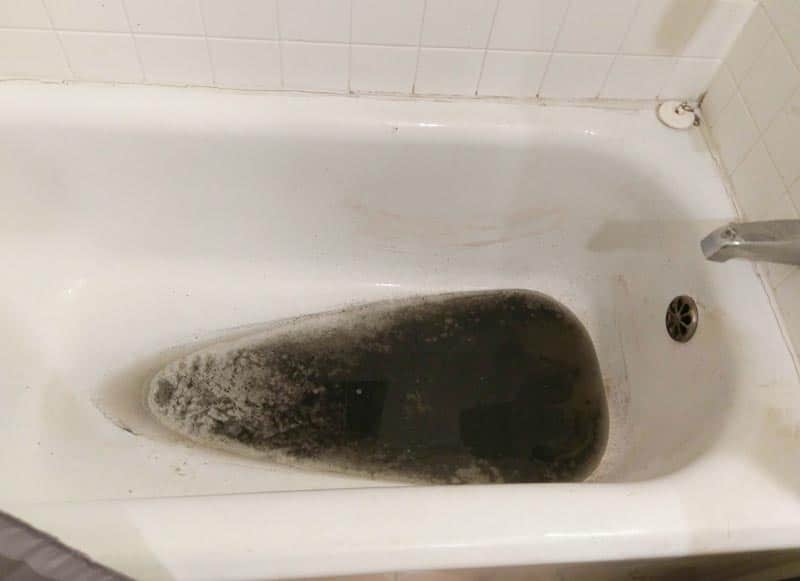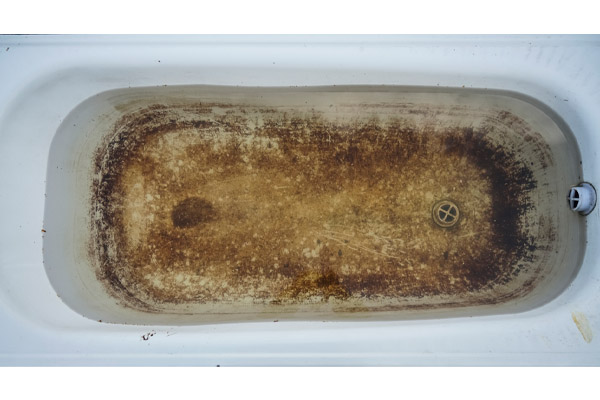Factors for Sewage Rising Through the Bathtub
Factors for Sewage Rising Through the Bathtub
Blog Article
What're your thoughts and feelings about Why is Sewage Backing Up Into My Bathtub??

Sewage back-up in the bathtub can be a distressing and unsanitary problem for any kind of property owner. Not only is it bothersome, however it also postures serious health and wellness risks and shows underlying problems with the plumbing system. Comprehending why sewer is showing up via the bathtub is important for taking proper action to attend to the problem properly.
Intro to the Issue
Typical Reasons for Sewage Back-up
Blockages in the Sewer Line
Among one of the most usual sources of sewer backup is a blockage in the drain line. This can take place due to the build-up of debris, oil, or foreign items in the pipes, protecting against correct flow and causing sewer to back up right into your bath tub.
Tree Origin Intrusion
Tree origins looking for moisture and nutrients can infiltrate drain lines with little cracks or joints. Over time, these roots can grow and increase, triggering considerable damages to the pipes and causing sewer back-up issues.
Understanding the Problem
When sewage starts backing up into the bath tub, it's a clear indicator of a problem with the water drainage system. The wastewater that should be flowing far from your home is rather locating its back into your home, which can cause substantial damages and carcinogen.
Possible Reasons
Several aspects can add to sewer backup in the bath tub. From clogs in the sewage system line to concerns with the plumbing facilities, identifying the source is crucial for finding a solution.
Aging Framework
Older homes might have dated plumbing systems that are more at risk to corrosion, splits, and damage. As pipelines age, they come to be a lot more vulnerable to leakages and clogs, enhancing the likelihood of sewage backup cases.
Heavy Rainfall or Flooding
During periods of heavy rainfall or flooding, the sewer system might come to be overwhelmed with excess water, triggering back-ups and overflows. This can lead to sewage supporting into tubs and other components inside the home.
Indicators of Sewage Backup
Foul Odors
Undesirable odors rising from drains or fixtures, particularly in the washroom, may indicate sewage back-up problems. These smells are usually solid and consistent, signifying an issue that calls for immediate focus.
Slow Draining Fixtures
Tubs, sinks, and bathrooms that drain pipes gradually or otherwise whatsoever could be experiencing sewer backup. If several fixtures are influenced concurrently, it's most likely that the problem stems from a typical factor, such as the main sewage system line.
Gurgling Sounds
Strange gurgling or bubbling sounds originating from drains pipes when water is running elsewhere in your house are indicative of air entraped in the plumbing system. This air buildup can arise from sewer backup and ought to be investigated promptly.
Health Dangers Related To Sewer Back-up
Contamination of Water System
Sewer backup can pollute the supply of water in your house, presenting a major health and wellness danger to you and your family. Direct exposure to contaminated water can bring about stomach problems, skin infections, and various other ailments.
Mold and mildew Development
Wetness from sewer back-up can produce suitable problems for mold growth in your home. Mold and mildew spores can aggravate breathing problems and create allergic reactions in sensitive people, making timely cleanup necessary.
Spread of Disease
Sewage includes harmful microorganisms, infections, and parasites that can create a variety of conditions, consisting of liver disease, cholera, and gastroenteritis. Entering into contact with sewer or infected surface areas puts you in jeopardy of infection.
Tidying up After Sewage Back-up
Sanitation Procedures
Thoroughly decontaminate and sanitize affected areas after sewage back-up to remove harmful microorganisms and avoid mold growth. Usage suitable cleaning items and safety gear to make sure secure and efficient cleanup.
Remediation of Affected Areas
Fix any type of damages to flooring, walls, or fixtures brought on by sewer backup. Depending on the degree of the damages, you might need to replace carpeting, drywall, or various other products to recover your home to its pre-loss problem.
Immediate Actions to Take
Shutting Off Water
In case of sewage back-up, it's necessary to switch off the water to stop more contamination and damage. Find the primary water shutoff valve in your home and shut it off up until the concern can be fixed.
Speaking To a Professional Plumber
Dealing with sewer back-up is not a do it yourself task. Call a certified plumber with experience in handling sewage-related problems to assess the circumstance and execute necessary repair work or cleanings.
Avoiding Contact with Polluted Water
Till the sewer backup is resolved, avoid contact with polluted water to prevent the spread of microorganisms and microorganisms. Put on protective gear if you should be in the affected location and wash your hands extensively later.
Preventive Measures
Normal Upkeep of Drain Lines
Set up regular evaluations and maintenance of your sewage system lines to determine and deal with potential concerns prior to they intensify into major issues. This can include cleaning out debris, evaluating for tree origin breach, and fixing any type of damaged pipelines.
Mounting Bayou Valves
Take into consideration setting up backwater valves in your plumbing system to stop sewage from flowing back into your home during durations of heavy rainfall or flooding. These valves automatically close when water draws back up, shielding your building from contamination.
Appropriate Disposal of House Waste
Avoid flushing anything aside from toilet paper and human waste down the toilet to prevent obstructions and clogs in the sewer line. Dispose of oil, oil, and other family chemicals properly to lessen the risk of plumbing troubles.
Why Is Water Backing Up in My Bathtub When I Flush My Toilet?
What to do about a sewer line clog
First, don’t bother with plunging. No amount of plunging will dislodge the clog in a sewer line. The clog is too far away. Plungers are for clogs in the toilet itself, not the sewer line. Plus, the most likely causes of a sewer clog are:
Tree roots Flushed toys or feminine products Grease buildup Those items don’t move easily. And in the case of tree roots, the roots need to be cut out of the pipe and the pipe will need to be repaired.
You’ll need a closet auger. A closet auger is a type of plumber’s snake with a protective cover to keep from scratching the delicate porcelain toilet. If the clog is further down, you may need to remove the toilet or use one of your cleanouts to get to the clog.
We also recommend doing a video inspection of the drain to ensure that the cause of the clog has been completely removed. Otherwise, you could have the same problem again in a few days or weeks.
https://mspplumbingheatingair.com/blog/why-is-water-backing-up-in-my-bathtub-when-i-flush-my-toilet

I was made aware of that write-up about What to Do if Sewage Starts Coming Up Through Your Bathtub through a pal on another web property. Do you know about another individual who is in to the niche? Be sure share it. I am grateful for being here. Come back soon.
At This Website
Report this page